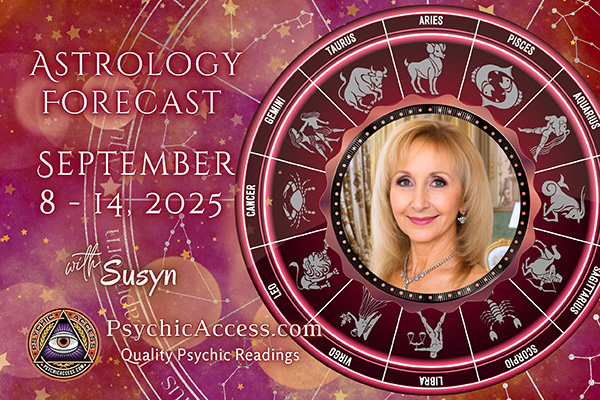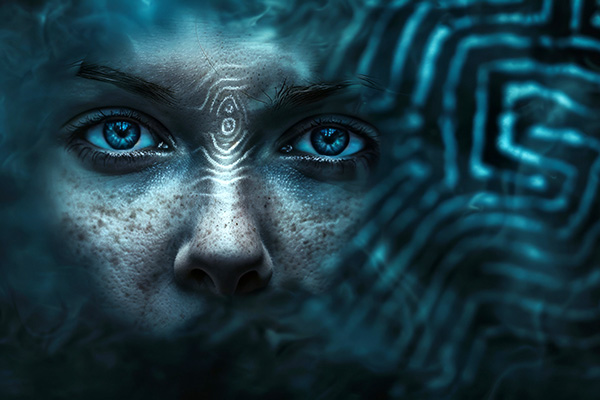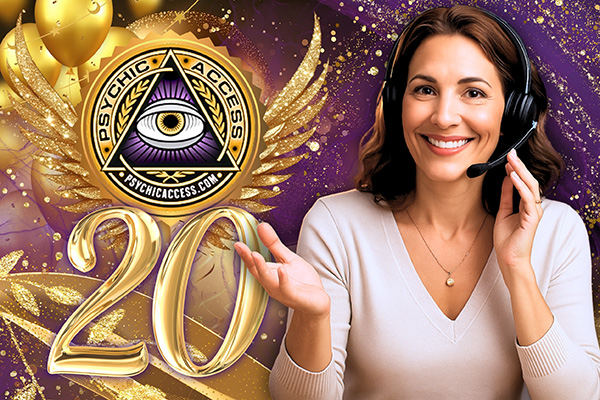Weekly Astrology Forecasts for September 8 – 14, 2025
 Today is centered on grounding and new beginnings. The Virgo Sun shining down encourages a return to rhythm, routines, and clarity. It’s an excellent day for reorganizing on both a daily and emotional scale. Now is the right moment to kick off something significant yet stable, especially if you feel ready to dive back into structured work or creative practices.
Today is centered on grounding and new beginnings. The Virgo Sun shining down encourages a return to rhythm, routines, and clarity. It’s an excellent day for reorganizing on both a daily and emotional scale. Now is the right moment to kick off something significant yet stable, especially if you feel ready to dive back into structured work or creative practices.
The day begins with the Pisces Moon aligning with Saturn in Pisces in a conjunction, inviting moments of quiet reflection. You might feel compelled to sift through lingering emotional issues or incomplete inner tasks. Trust this urge; it allows you to reset and prepare for the week ahead.
Later, the Moon transitions into Aries, shifting your focus from contemplation to action. With the Moon in Aries conjunct Neptune in Aries, creative urges surge. You could be inspired to let your thoughts flow freely without self-criticism. This is a wonderful time for sketching, journaling, or brainstorming anything that sets your imagination loose.
This afternoon* sees a change of pace. The Moon in Aries forms a sextile to Uranus in Gemini, introducing sudden flashes of inspiration. Novel ideas or inventive solutions may appear out of nowhere. This energy encourages you to take a chance on something new, perhaps reaching out to someone in a different way or experimenting with a new tool or medium.
Shortly after, the Moon in Aries also sextiles Pluto in Aquarius, adding depth to your drive. You might tap into a powerful motivation to reshape areas of your life that have felt stagnant.
Tuesday, September 9: Inspired Action
This Tuesday brings a surge of inspiration combined with an encouragement to connect. The Moon in Aries makes a quintile aspect to Pluto in Aquarius, igniting creative energy with transformative potential. Innovative and unique ideas might flash into your mind.
Not long after, the Moon in Aries makes a quincunx to Mercury in Virgo. You might experience some tension between your heart’s creative desires and the precise details your mind is focused on. Finding balance is essential. Acknowledge the disharmony but don’t let it halt your progress. Complete one task, take a breath, then return with a fresh perspective.
It is a day where intuitive creativity meets thoughtful adjustments. Let your instincts lead you, but be open to refining your work without judgment. Trust both your inner fire and your attention to detail today.
Wednesday, September 10: Stabilizing Momentum
This Wednesday invites you to solidify your progress into concrete structure and emotional understanding. It’s a day where emotional healing, practical reflection, and intentional reorganization come together. It’s better to address both your surroundings and your inner life cohesively rather than separately.
The Moon in Aries aligns with Chiron in Aries, stirring emotions and memories that may need tender healing. This is a quiet opportunity to honor wounds or vulnerable aspects of yourself. Compassion is your ally during these hours.
With the Sun in Virgo opposing the North Node in Pisces, you might feel torn between everyday obligations and deeper spiritual urges. This tension is beneficial. It serves as a reminder to align your daily habits with your soul’s purpose. Reflect on how routine can support your greater path.
The Moon in Taurus squares Pluto in Aquarius, prompting a reassessment of how you manage stability or material resources. If something feels stuck, consider altering your approach instead of pushing through. Adapt with intention.
Thursday, September 11: Gentle Expansion
This Thursday offers small breakthroughs and steady emotional development. The Moon in Taurus forms a quintile to Jupiter in Cancer, introducing a gentle spark of optimism. Opportunities to nurture your environment or close relationships may arise naturally and effortlessly. Matters related to family, care routines, or home projects may flourish.
Later, the Moon in Taurus creates a semi-square with Saturn in Pisces. You might feel a sense of limitation or a decrease in enthusiasm. If motivation wanes, remember that discipline doesn’t mean denial. Keep moving forward, even if slowly. It’s a day of quiet growth coupled with a measured pace. Let small achievements fuel your journey. Slow and steady will lead to victory.
Friday, September 12: Communicative Cheer
Let’s shift our focus towards connection and comfort. The weekend is on the horizon. The Moon in Taurus transitions into Gemini, changing your mood to be more chatty, curious, and sociable. It’s an excellent time for phone calls, hosting small gatherings, or catching up with friends online.
By mid-evening, the Moon in Taurus sextiles Saturn in Pisces, supporting structure in your social interactions. You can connect in a grounded manner that feels significant rather than trivial. Later, Mercury in Virgo sextiles Jupiter in Cancer, enriching your communication with warmth and wisdom. Today’s conversations are fruitful. You may create something impactful or convey a message with just the right nurturing touch.
This is a congenial, productive, and joyful pre-weekend. Use the Gemini Moon to reach out, support it with grounded thoughts, and let your words be filled with heart and care.
Saturday, September 13: Creative Rapport
Saturday’s aura is breezy, warm, and creatively inviting with a delightful fusion of artistic connection and emotional grace. Share, craft, and revel in the simple stir of inspiration. The Moon in Gemini makes a quintile to Venus in Leo, infusing your interactions with charm and playful affection. It’s an exquisite time to create, flirt, or enhance your space with some style.
Shortly after, the Moon in Gemini quintiles Saturn in Pisces. That imparts a solid foundation to your social energy. It’s a gentle reminder to enjoy and maintain connections, not just ignite fleeting sparks. By mid-day, the Moon in Gemini also quintiles Neptune in Aries. Creativity and empathy flow smoothly. You might find yourself blending words, colors, or ideas in a way that resonates with others.
Sunday, September 14: Conversations With Depth
The week wraps up with enriching dialogue and emotional resonance. The day is lively yet profound. Begin lightly, allow honesty to emerge, stay balanced, and be prepared to create space for deeper topics, if needed.
The Moon in Gemini squares Mercury in Virgo, signaling potential miscommunications or over-analysis. Watch for discussions that seem to go in circles. Clarity should be prioritized. Keep your explanations straightforward. Soon after, the Moon in Gemini sextiles Venus in Leo, lifting the mood. Despite any tricky discussions, a touch of affection or humor can mend the atmosphere.
Later, the Moon in Gemini trines Mars in Libra, perfecting the art of balanced interaction. Diplomacy feels seamless. You can express your views with elegance. A win-win scenario is attainable. Then, the Moon in Gemini sextiles Chiron in Aries, facilitating small conversational healing. A kind word or gesture today may provide comfort to someone in need or alleviate minor tensions.
Ultimately, the Moon in Gemini squares Saturn in Pisces. This reminds us that certain topics may feel heavy or restricted. If discussions become serious, honor the pause. It’s perfectly acceptable to slow your pace.
* All aspect and transit times are in Eastern Time (New York City, NY, USA). Please adjust accordingly for your local time zone.
|
Residing in New Mexico, Susyn provides Psychic Guidance, Astrological Insights, and Channeled Messages designed to change lives! Her credentials include a doctorate in metaphysical studies and certifications from The American Association of Professional Psychics and The American Tarot Guild. She is also a published author with two metaphysical books and numerous articles and horoscope columns. Alongside her readings, Susyn mentors others to master their gifts, elevate their vibrations, and empower themselves. A highly sought-after guest on various radio programs, she has also hosted her own. If you’re in search of a genuinely bright shining star with astonishing accuracy, look no further. You can find Susyn at PsychicAccess.com. |
As we usher in the second week of September 2025, the universe is alive with energy and excitement. With numerous significant planetary movements and alignments occurring, this week promises to be vibrant and transformative for all zodiac signs. Let’s explore what the stars have in store for us in our weekly astrology forecast for September 8 – 14, 2025.
On September 8, Mercury, the planet governing communication and intellect, enters Libra, instilling a sense of balance and harmony in our thoughts and conversations. This is an excellent opportunity to focus on diplomacy and compromise in our interactions, as we seek common ground and shared understanding.
In the meantime, Venus, the planet associated with love and beauty, forms a harmonious trine with Uranus on September 10, unleashing unexpected and exciting developments in our relationships. This period is ripe for embracing change and spontaneity in matters of the heart, inviting new experiences and connections.
On September 12, the Sun in Virgo engages in a challenging square with Jupiter in Sagittarius, urging us to be cautious of our tendencies toward excess and indulgence. It’s vital to find equilibrium between practicality and optimism during this time, as we navigate the tension between our desires for expansion and the need for discipline.
Finally, on September 14, Mars in Leo creates a tense square with Pluto in Scorpio, heightening our desires and compelling us to confront power dynamics in our lives. This time calls for assertiveness and determination as we strive to overcome obstacles and transform our circumstances through unwavering will.
Overall, the astrology predictions for this week indicate a phase of growth, change, and transformation for all zodiac signs. By remaining open to new experiences, embracing balance and harmony in our relationships, and facing challenges with courage and resolve, we can harness the cosmic energies at play and emerge stronger and more empowered on the other side. Continue reading

















